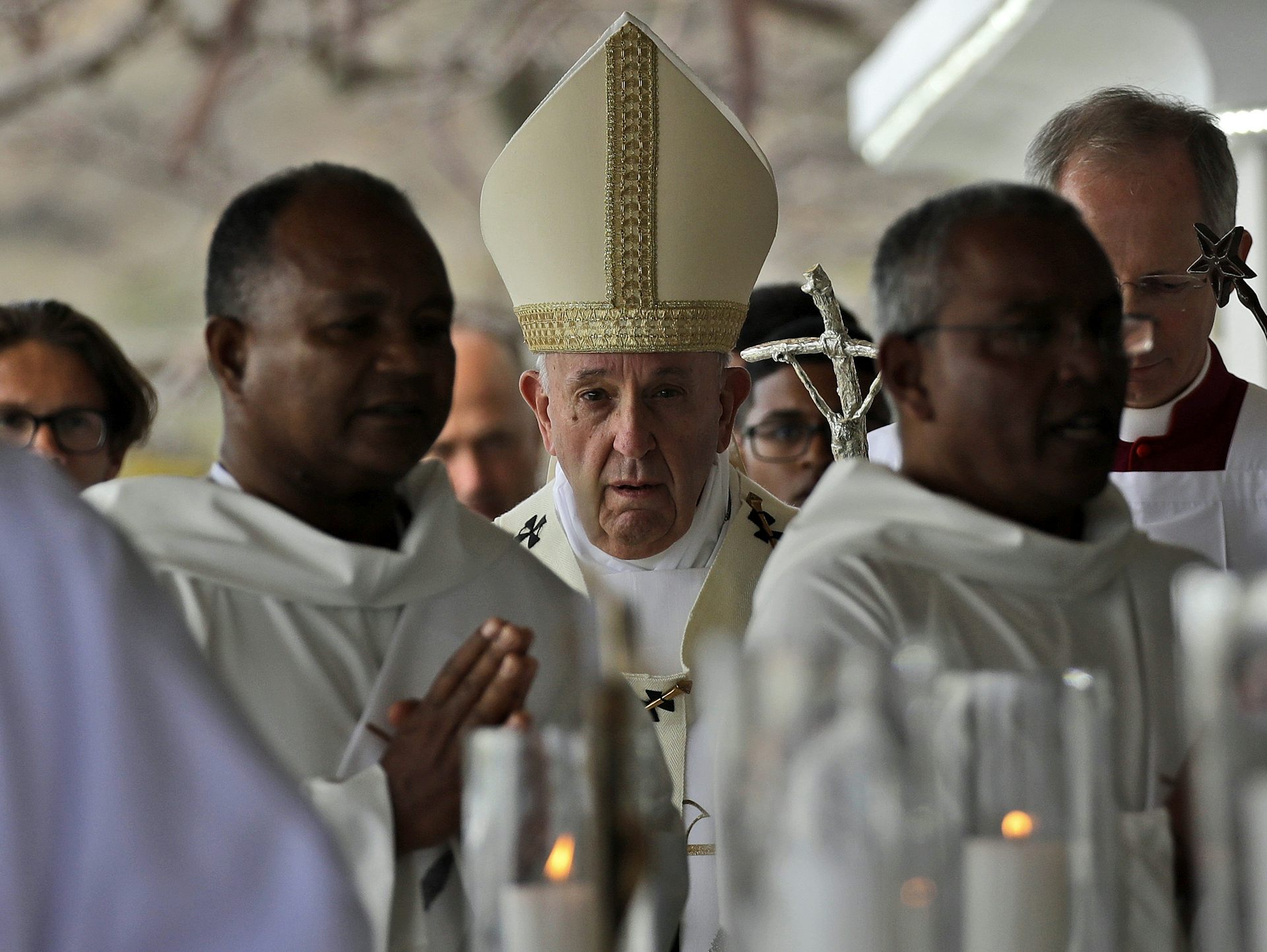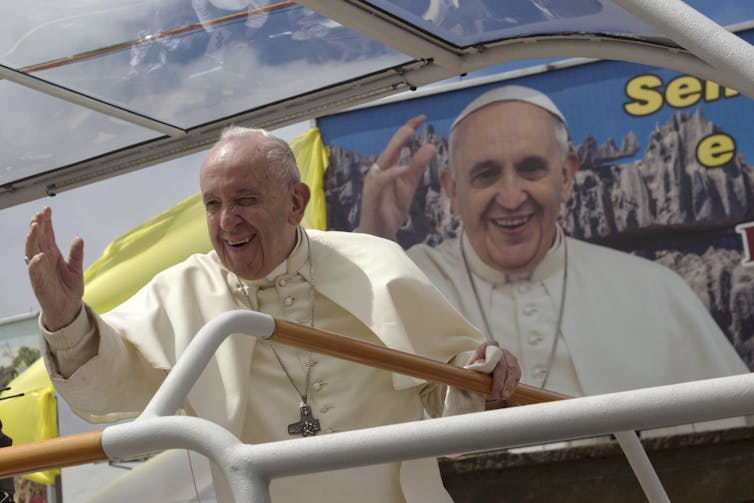
Pope Francis has completed his seven-day tour of three African countries: Mozambique, Madagascar and Mauritius. It was a significant trip for a number of reasons.
During his visit, the pope spoke on issues of peace and ecological sustainability that these countries are facing. Mozambique recently signed a peace accord with longtime rebels, and the country is still recovering from the cyclone earlier this year that killed over 1,000 people. Madagascar faces severe deforestation, and Mauritius too faces risks from climate change.
Africa has the world’s third largest Catholic population, after the Americas and Europe. Nearly 1 out of every 5 Africans – 19.2% – is Catholic. The Pew Research Center expects the number of African Christians south of the Sahara, including Catholics, to double by 2050.
From my perspective as a scholar of African religions, however, the pope’s visit needs to be understood against the background of the church’s longer history in Africa and the current challenges Catholicism faces in the continent.
Early Catholic history in Africa
Although Catholicism in Africa expanded dramatically under European colonialism in the 19th and 20th centuries, the church’s roots in Africa go back to its earliest days.
Christianity emerged in Africa among first-century Jewish communities in Alexandria, Egypt. Many early, influential church figures were North African.
After the Islamic conquest of North Africa – from 634 to 711 A.D. – however, Islam grew faster than Christianity, making it the region’s dominant religion.
Muslim traders then took Islam across the Sahara Desert to West Africa and over the Indian Ocean to eastern Africa.
Spread of Christianity
The later arrival of Catholic missionaries on the western, central, southern and eastern coasts of Africa spread Christianity across the continent.
In the 15th and 16th centuries, the Portuguese came to Africa by ship and began winning converts in the Central African kingdom of Kongo.
On the other side of the continent, in today’s Mozambique, missionaries established Catholic communities that would eventually become the contemporary Mozambican Church.
French missionaries arrived in Madagascar in 1640. With the help of early converts, they produced a Catholic catechism, or teaching manual, in Malagash, the island’s indigenous language.
Because Catholic Portugal, and later France, expanded the trans-Atlantic slave trade, both priests and slave merchants followed in their wake.
African Catholics and European missionaries nonetheless protested against the slave trade. Even the Vatican condemned slavery in the 1680s. But many bishops and priests already possessed slaves, and the Vatican enslaved Africans to man its ships.
The church’s complicity in Africa’s subjugation only intensified in the colonial era in the 19th and 20th centuries as the church founded parishes, schools and hospitals across the continent, often with the encouragement of colonial authorities.
Reforms and end of colonialism
Catholic missionaries worked mostly in European languages, contributing to the continent’s linguistic and cultural colonization.
In fact, colonization and evangelization occurred in lockstep. The Portuguese colonized Mozambique; the French, Madagascar; and Britain, after initial French occupation, Mauritius.
But Catholic missionaries also criticized colonialism. In 1971, for example, authorities in Mozambique, still under Portuguese rule, expelled a Catholic order for criticizing the colonial regime for preventing missionaries from properly serving Mozambicans.
Elsewhere on the continent, during Africa’s transition from colonial rule to independence, from the late 1950s to 1980, many priests supported emerging ethnic and nationalist movements.
The long-term outcomes of these Catholic-backed independence movements have been mixed.
In what was to become Zimbabwe, for example, bishops supported resistance against white-led Rhodesia from the 1960s to 1980 but unwittingly brought dictator Robert Mugabe, who died recently, to power.
But in Malawi, Catholics in 1994 helped unseat the repressive president, Hastings Banda, and establish multiparty democracy.
And in many French-speaking African countries, bishops served as neutral mediators who led national conversations between autocratic rulers and civilians throughout the 1990s, often achieving democratic reforms.
Rise of Pentacostalism, Islam

To many Africans today, in the wake of independence and the
church’s support for it, the Catholic Church has distanced itself from its colonial past to become an institution associated with sociopolitical reform, education and health care.
This accounts in part for its substantial growth in the three countries visited by the pope.
In Mozambique, Catholics are 30.3% of the population, the country’s largest religious group, surpassing indigenous religious practitioners and Muslims. In Mauritius, at 27.2%, Catholics take second place to Hindus but outnumber Muslims. And in Madagascar, they come in third at 21.7%.
But the church faces new challenges.
In 1970, Pentecostals represented less than 5% of all Africans. They now stand at 12%, a significant shift. In Mozambique alone, Pentecostals are the second largest Christian community.
And Islam is growing faster in Africa than Christianity. By 2050, African Muslims south of the Sahara are expected to increase from 30% to 35% of Africa’s population.
The pope’s visit, then, reflects a strategic commitment to the continent, for good reason.
The battle for souls is a struggle for statistics, enmeshed in the changing loyalties of the world’s largest Christian church.
Joseph Hellweg, Associate Professor of Religion, Affiliated Associate Professor of Anthropology, Florida State University
This article is republished from The Conversation under a Creative Commons license.

